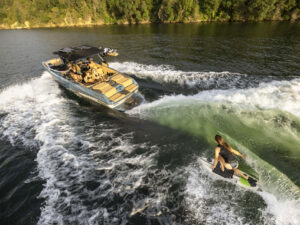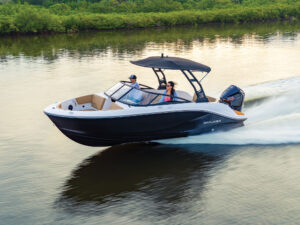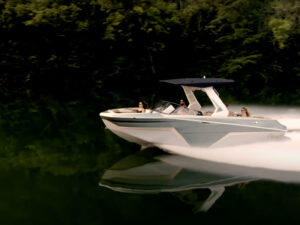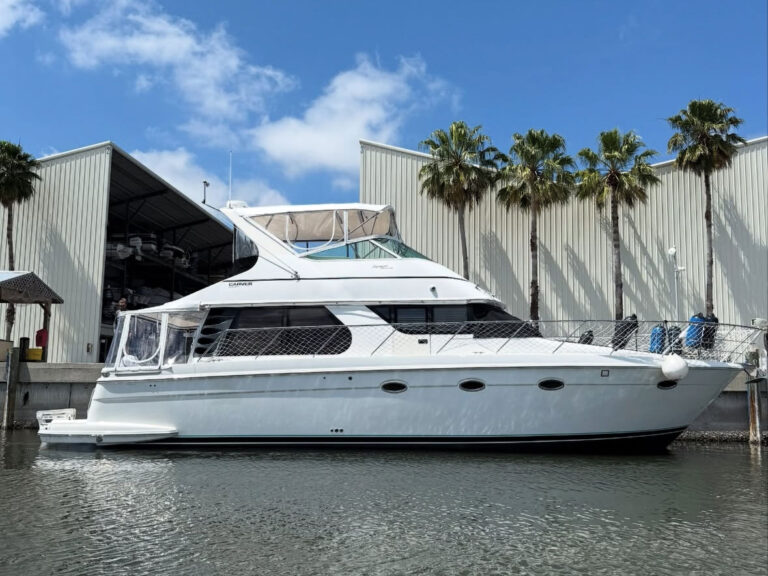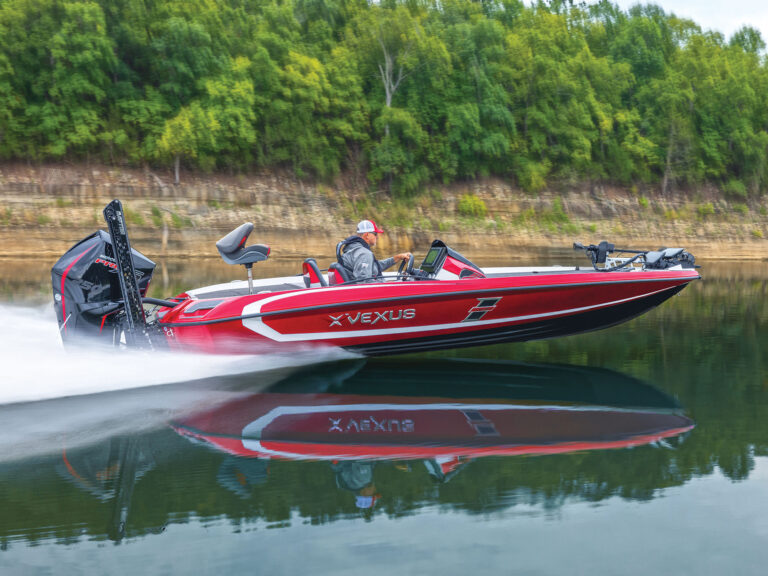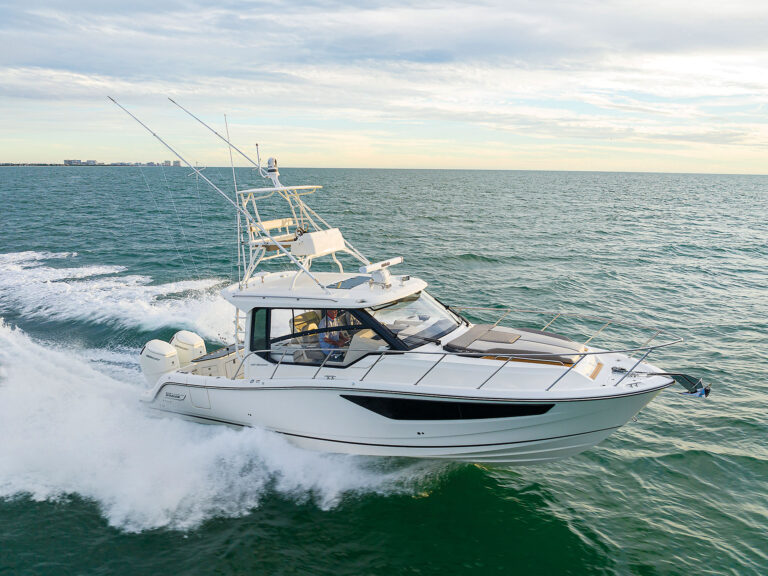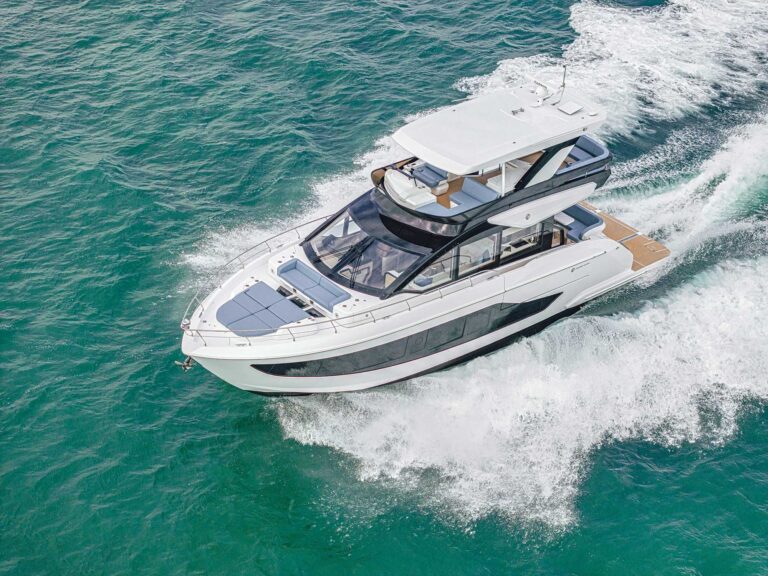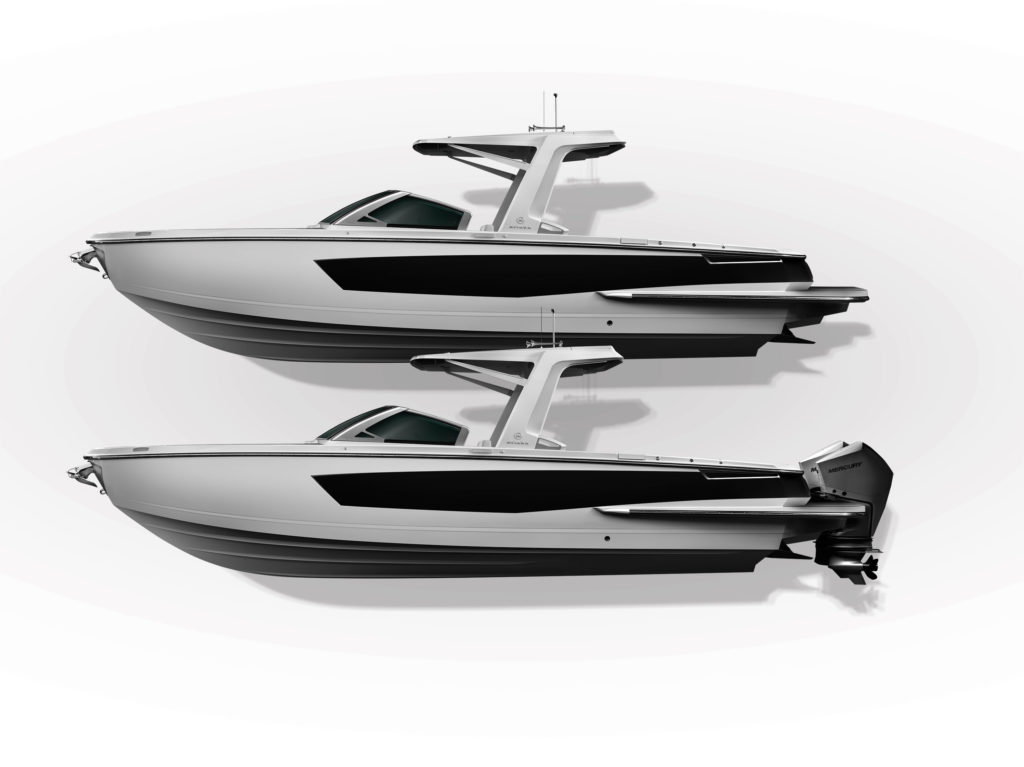
For many years, making the choice between a sterndrive boat and an outboard-powered boat was easy: There wasn’t one. That’s because manufacturers built either one or the other in a certain style, and you took whatever power came with the boat style you wanted.
But the proliferation of outboards in recent years, as well as clever engineering on the part of boatbuilders, now allows you to choose between sterndrive or outboard power on essentially the same boat. So, which would you pick?
To get a better look at the pros and cons, we jumped at the chance to run the new Aviara AV32, a day cruiser extraordinaire from offshoot-of-watersports builder Mastercraft.
The Aviara AV32 is the perfect comparison vehicle because it offers either sterndrive or outboard power on exactly the same boat, and when we say exactly, we mean exactly. The two 32s are identical sisterships with, aside from engines, only a few notable exceptions. Let’s take a closer look.
Power
First, the two test boats were closely matched, with the outboard being pushed along by a pair of Mercury 300 hp Verados (350 hp supercharged Mercs are optional), while our sterndrive boat had twin Ilmor MV8 6.0Ls putting out 380 hp each (with 430 hp Ilmors optional). So, the outboard boat was running 600 hp versus 760 hp, a difference that showed up late.
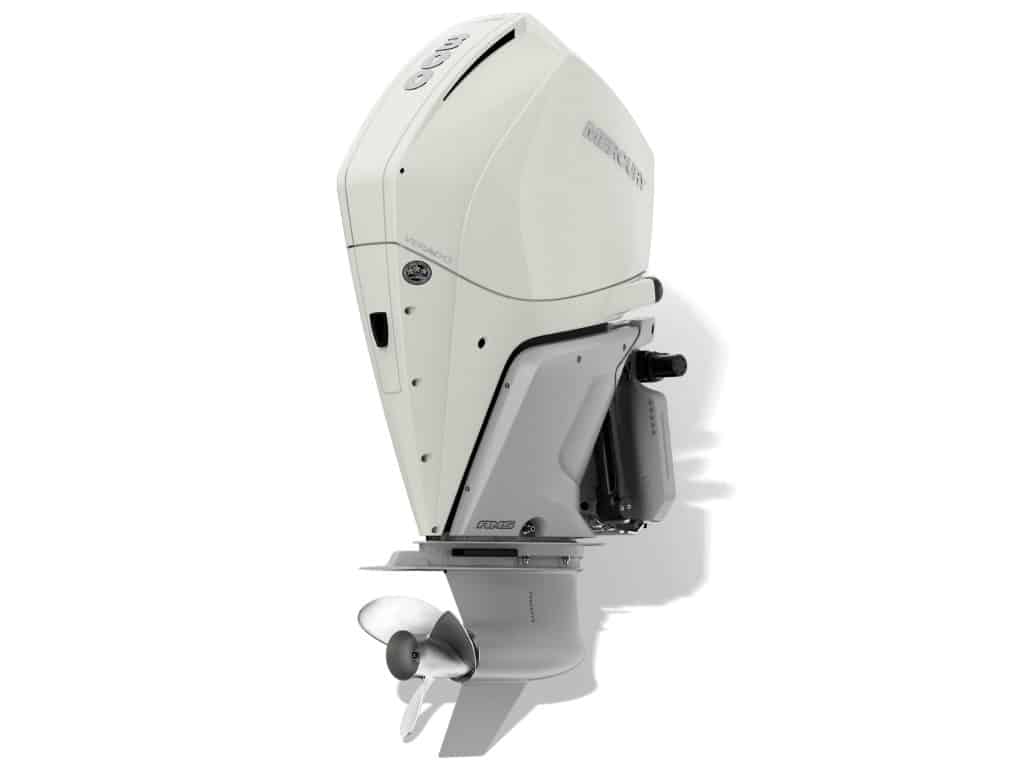
Weight
The sterndrive version of this boat has a stated displacement of 13,000 pounds, while the outboard version reportedly weighs in at 12,000 pounds, an 8 percent difference. However, making 600 horsepower gives the outboard a power-to-weight ratio of 0.05, while the 760-horsepower sterndrive’s power-to-weight ratio is 0.058, or 14 percent better.
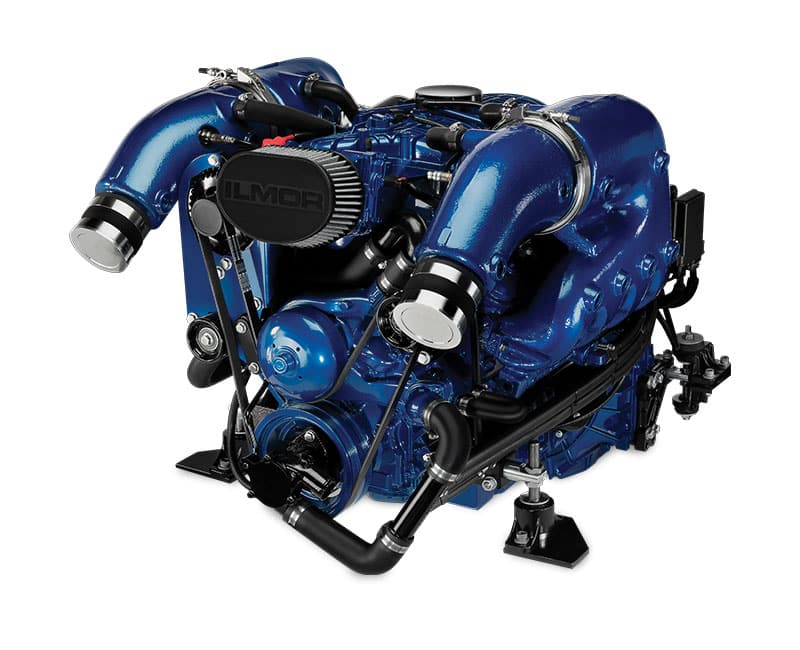
Price
For most of us, this is where we start our boat hunting, and the outboard wins at a price that’s $5,460 lower: The outboard Aviara is $336,540, and the sterndrive is $342,000 with similar equipment.
The Big Choice: Transom
Certainly the biggest difference between the two boats is that the two outboards eat up a big chunk of what is a very large transom platform on the sterndrive version. If your joy in life is jumping off the transom into the water, this might just be the deciding factor for you. When you look at the wide transom on the sterndrive version, you can see the “punch out” that is removed to make room for the twin outboards, and yes, it takes out a significant chunk of transom play or sprawling room.
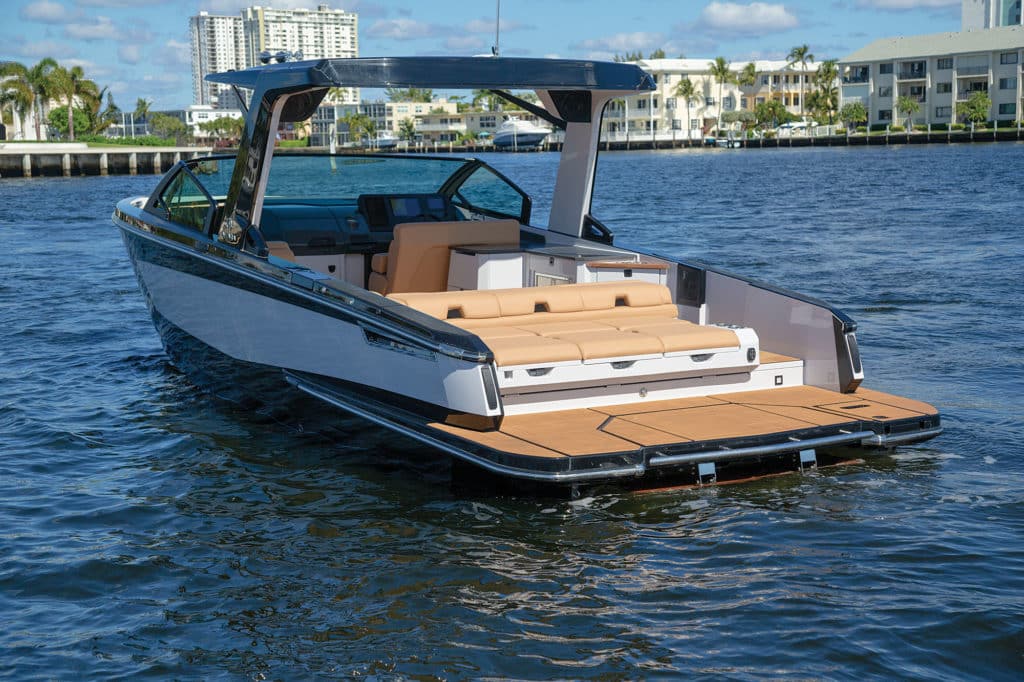
You also lose one of the coolest ideas available, which is offered only on the Aviara AV32 sterndrive: an added stern platform that unfolds hydraulically from under the existing platform to create an in-water seating area. Sit on this platform with your elbows on the upper platform, and it’s like sitting on the top step of a swimming pool, half-submerged. It also makes reboarding from the water easy, although both IO and outboard versions have identical foldout swim ladders. On the Aviara, particularly because of its clever transom platform, the sterndrive gets the nod if transom living is your thing.
The Second Choice: Space
In years past, sterndrive boat design required engine covers in the cockpit because the engines stuck up above the cockpit’s sole level. These were usually concealed with sun pads, but the fact was the sterndrive ate up valuable cockpit room.
In the case of the Aviara AV32, clever design engineering and recognition of how we really use our boats has made this problem a moot point. Yes, there is an engine cover, but it’s still there on the outboard boats (it’s a huge storage area), and it doesn’t impose on the nifty seating and bar-stool arrangements. There is no winner because the cockpit stays the same regardless of power choice.
Speed
Comparing boats with different horsepower seems a little oranges and apples, but the sterndrives have to move a boat that is 1,000 pounds heavier (13,000 pounds versus the outboard at 12,000 pounds), which is equivalent to five Aunt Ednas sitting in the cockpit.
If you want to drag from stoplights or whatever the nautical equivalent is, the outboard version is going to be your choice. It had a zero-to-25 mph planing time of 7.5 seconds, while the sterndrive Aviara with the Ilmors did zero to 25 in 10 seconds. Of course, it was just starting to get rolling at that point.
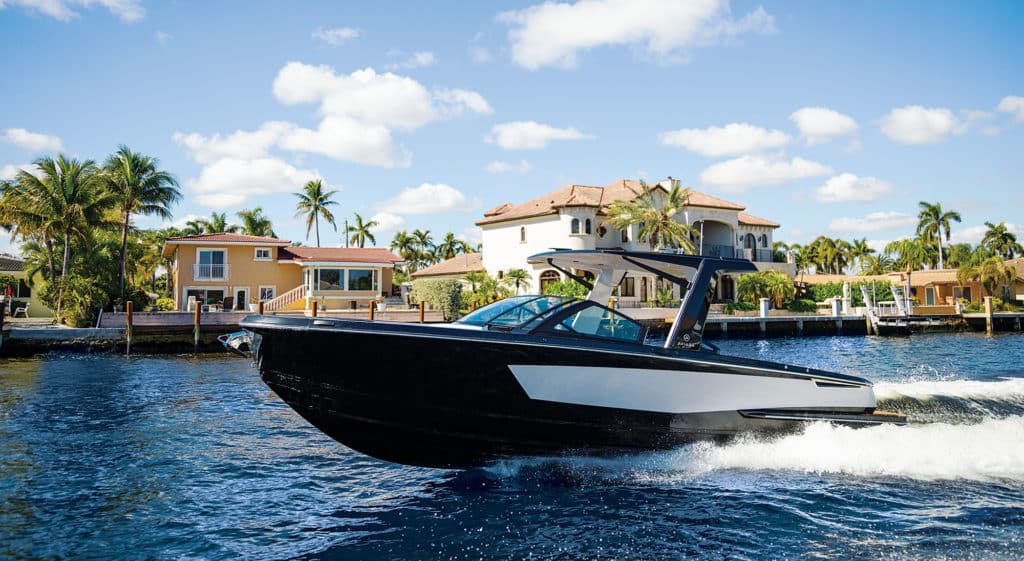
The twin Merc 300s pushed the Aviara to 50.25 mph with the hammer down at 5,600 rpm, while the Ilmor sterndrive boat reached 56.9 mph with its extra 160 hp. Slap a couple of optional Merc 350s on the transom, and we’d bet you’d have a similar top speed on both boats because the power-to-weight ratios would be closer, but it would still favor the sterndrives. Of course, throw in the optional Ilmor 430 hp mills, and it’s another ballgame.
Top-end goes to the sterndrive.
Economy
The Mercs won the economy test because the NASCAR-bred Ilmors were thirstier at higher speeds. For example, at about 30 mph, both boats netted the same 1.3 to 1.4 mpg efficiency. So, it’s even money when easy cruising. But if you like to go fast…
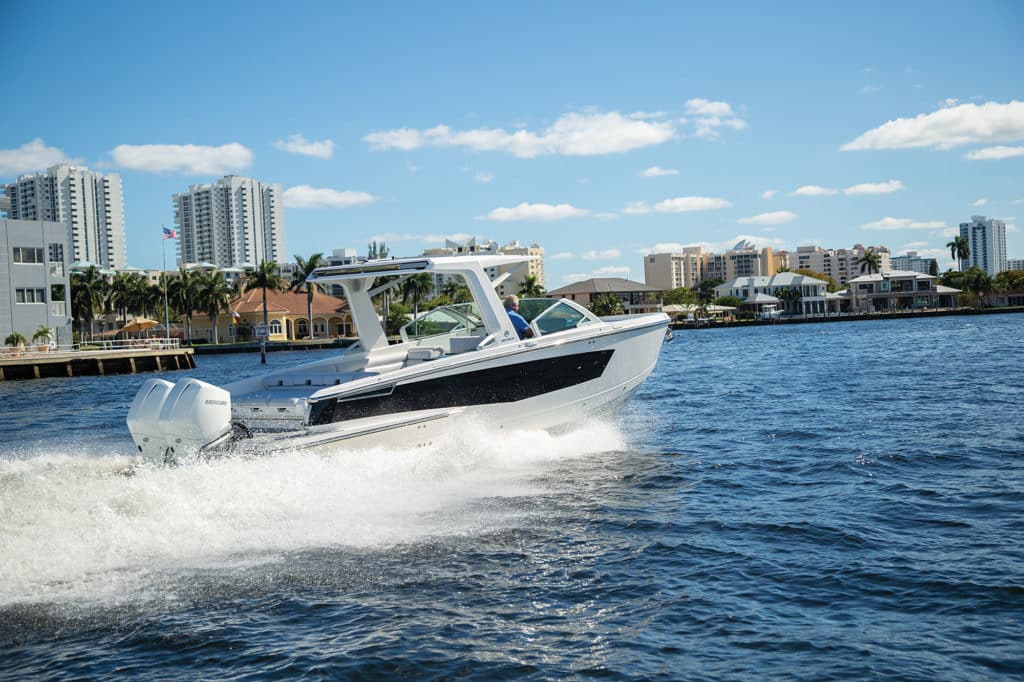
At 5,000 rpm and 40.25 mph, the Mercury outboards sipped just over 43 gph, while the Ilmor sterndrive engines slurped away fuel at 58 gph at 44 mph, which would make about a 10 percent difference in what your fuel bill would total. The outboard wins by this margin.
Size
Since the Mercury outboards were essentially bolted onto the back of an existing hull, it’s not exactly rocket science to figure out that the outboard-powered version is going to be 22 inches longer than the sterndrive (34 feet, 4 inches versus 32 feet, 6 inches).
Does this mean anything? Probably not to most people, unless your dry-storage facility only takes boats to 33 feet. Also, your marina just might nick you for an extra couple of feet of slip space. Not a deal breaker.
Visibility
One of the clever features on the Aviara AV32 is stadium seating that faces aft in the cockpit, complete with mezzanine seats that rise from the sun pad. You can sit on these “bar stools,” or sit at a lower level on the seats with flip-up backs.
If your fun is to talk to people in the water at a sandbar or watch your family members do tricks and embarrass themselves on wakeboards, then you’ll have to peer around a pair of ginormous outboards in your line of sight.
With the sterndrive version, you not only get that cool beach platform at the sandbar, but you also have clear vision aft while you’re running. The sterndrive wins.
Maintenance, Part I
One of the things we alluded to at the beginning of this article is that the price of the boat is just a starting point. It’s like going to the theater: The boat is the admission ticket, but now you’ve got to buy popcorn, Cokes and Milk Duds, and with boats, it’s often the cost of maintenance.
Are sterndrives or outboards less expensive to maintain and service?
Outboards have always had a solid lead in this category because, well, they’re right there. The hood comes off, revealing everything. If you need to see the lower unit or prop, it tilts up out of the water. Sterndrive engines are often buried and hard to access, and the sterndrive stays underwater.
Sterndrives also carry the baggage from years of lower units that practically corroded to powder as you watched them, but if there is one engine that is going to turn that into a myth, it’s the Ilmor MV8 6.0L. Based on GM’s truck engine, Ilmor uses a closed-cooling system, including a unique closed-cooled exhaust manifold. The lower unit is an extra-tough Yanmar diesel drive with both active and passive corrosion protection. Ilmor is so sure of its product that it’s backed with a five-year, 500-hour warranty.
So, in the case of the Aviara AV32, I’d vote that they’re about equal in ease of maintainability.
Maintenance, Part II
When it comes time to winterize, the outboard is way ahead of the game because, again, it tilts out of the water. The sterndrive engine is basically a marinized version of an automobile engine with all the inherent coolant, and it takes longer to winterize it at the end of the season and recommission it at the beginning, so that’s on-water time lost. You can opt for cockpit heating with the sterndrive Ilmors to stretch your season but, in the end, the outboard wins.
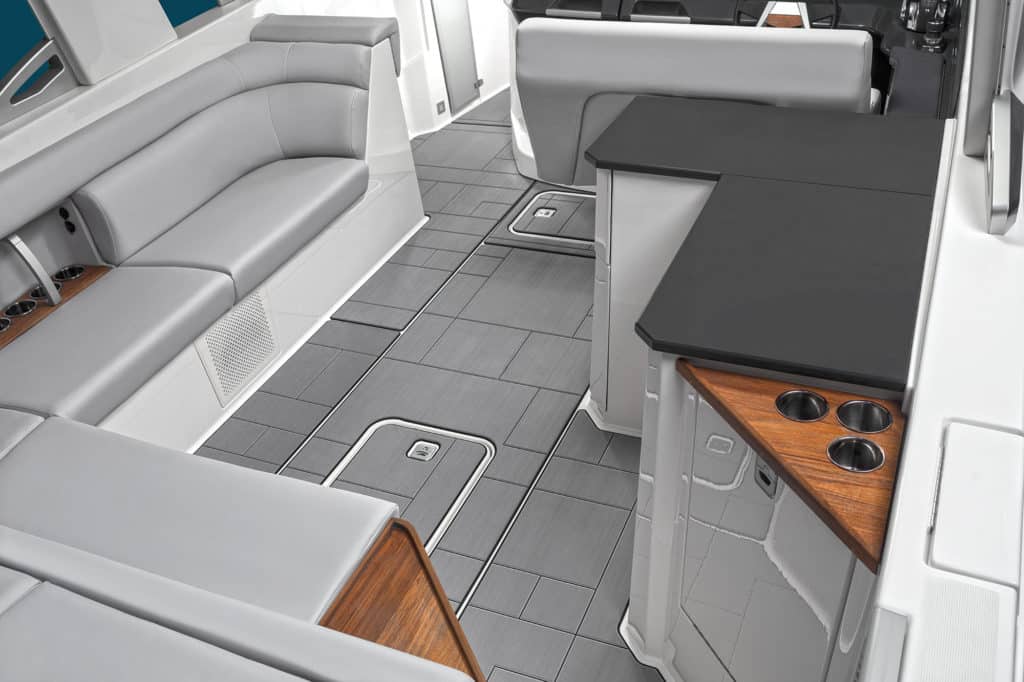
Maintenance, Part III
We have to give the Ilmor people great credit for making their sterndrive truly user-friendly when it comes to common maintenance and checks. Everything—and we mean everything—that you need to check when you run the boat is conveniently placed at the front of the engine: oil, coolant, steering fluid, etc. We’d bet this is from NASCAR, where everything gets checked in those 14-second pit stops. When the service checkpoints are hard to reach (and we’ve had several of those boats), you tend to think, Oh, it’s OK, and just go boating. And that thinking always leads to getting cheerful Christmas cards from your mechanic.
Besides, the entire sun pad/seating area hinges up on the sterndrive Aviara, providing all-around accessibility for service. You can step down into the engine bay and tinker around, so your service techs will like this installation. Points to the sterndrive.
Resale
Most people are so enchanted with their new boat that they don’t think about resale. It’s a little like marriage—who thinks about divorce during the honeymoon? But an outboard-powered boat makes sense here because outboards are easy to swap. In many cases, it’s a bolt-for-bolt change that might even accept the same wiring harness.
If your buyer thinks your outboard is a little tired, or he just wants that new higher-horsepower, higher-efficiency or trick-colored outboard, it’s a simple process. Swapping out sterndrive packages is a lot more costly. The outboard wins.
Skinny Water
If you want to go fishing on the flats or back up to a sandbar for an afternoon of splashing around, the outboard usually wins because you can literally raise it above the water.
But the Ilmor sterndrive kicks up high, and both Aviara models have a drives-up draft of just 1 foot, 11 inches, which should get you plenty close to both the bonefish and the babes in the sand. Call it a draw.
Shifting
Not many buyers think about shifting when they buy a boat, but it’s something to be considered. For years, outboards (and many sterndrives) have been synonymous with a big clunk every time you shift from forward to reverse or back. It can make you look dumb when you’re docking, and it can be irritating if you’re maneuvering.
The Ilmor folks have perfected their One Drive hydraulic clutch transmission that is electro-magnetically actuated rather than having the usual cone clutch.
The result is an incredibly smooth shift (as many as two per second) that makes using the joystick (both Aviara’s outboard and sterndrive had joystick controls) or shifter syrupy-smooth. We actually had to check the shifter to see if the boat was in neutral.
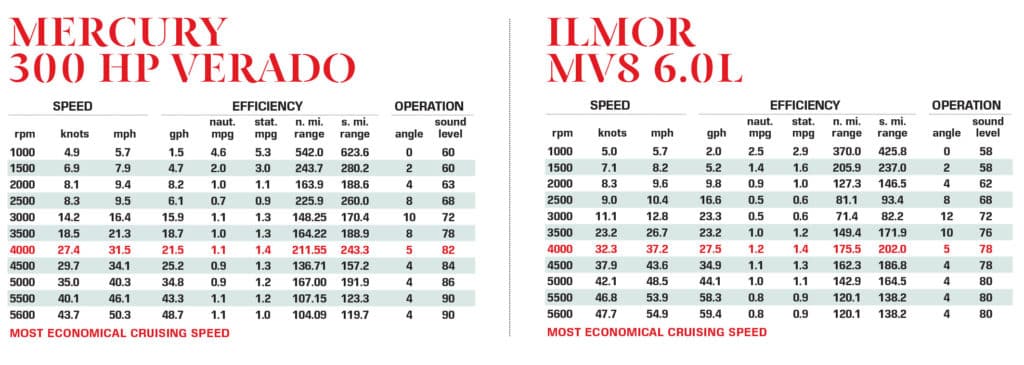
Sound
With all their tinkering, particularly in the cooling system, the Ilmor engineers also created an amazingly quiet sterndrive engine. In the Aviara AV32, the sound level never went over 80 decibels, which is quiet for any boat.
Read Next: More Boats, Engines and Accessories Go Head-to-Head
The outboard, on the other hand, tipped the scale at 90 decibels, which, in the complex sound-measuring business, is roughly twice as loud as 80 decibels. So the sterndrive wins.
The Results
We didn’t count the scores because they’re so close. Price, speed and economy differences were negligible. If you want a transom for water play, the smart move is to get the sterndrive. If you want better corrosion resistance and easier maintenance, plus drives that can be trimmed clear of the water, go for the outboards. It’s your call, and with the Aviara AV32, either choice is a winner.


